Do It Yourself
Knife making: Make A Knife From An Old Wrench
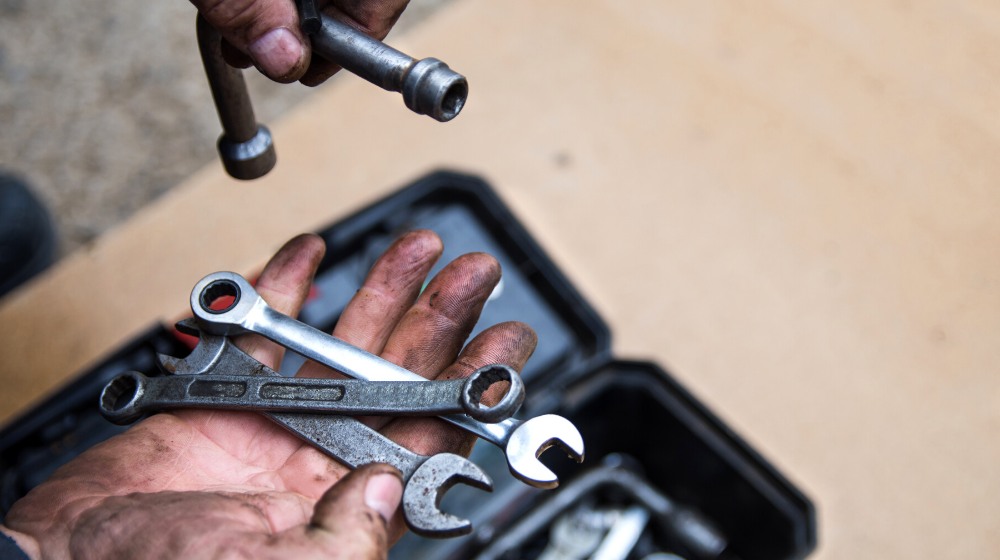
This knifemaking challenge will bring out the blacksmith in you and let you transform an old wrench into a knife. Learn how to be resourceful and make a survival knife from an old wrench here!
RELATED: The Complete Guide To Knife Steel Quality
Knife Making Skills | Transforming an Old Wrench into a Weapon
Knife Forging Supplies
Knifemaking is an ancient art. However, like many other skills, the skill of traditional knifemaking seems lost in our modern world of convenience.
You can include knifemaking in your essential primitive survival skills. Every knife, whether made from ancient Damascus steel or modern carbon steel, comes from a set of tools.
What You’ll Need:
- an old wrench
- a grinder
- blacksmithing forge
- a hammer
- knife sharpening tools of your choice
Reminder: A knife maker needs protective clothing. You don’t want to burn yourself with sparks from the belt grinder or get bits of steel in your eye. Use goggles, gloves, and even breathing protection so your DIY knifemaking is safe.
Step-by-Step Guidance for Knife Making
Step 1: Choosing the Knife Side of the Wrench
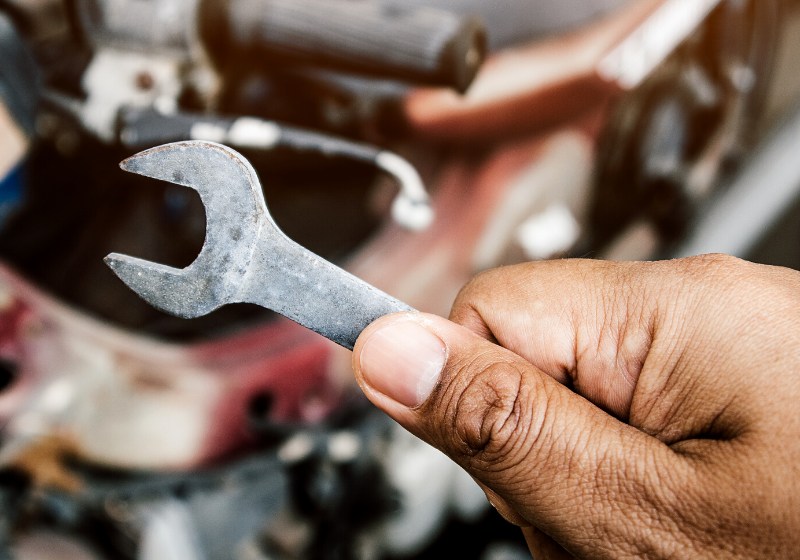
First, choose which end of the wrench you want for the knife blade and the handle. Use a portable grinder to straighten out the end you chose to be the knife blade.
Then, use the grinder to cut through the steel to shape the blade.
Step 2: Setting Up the Blacksmithing Forge
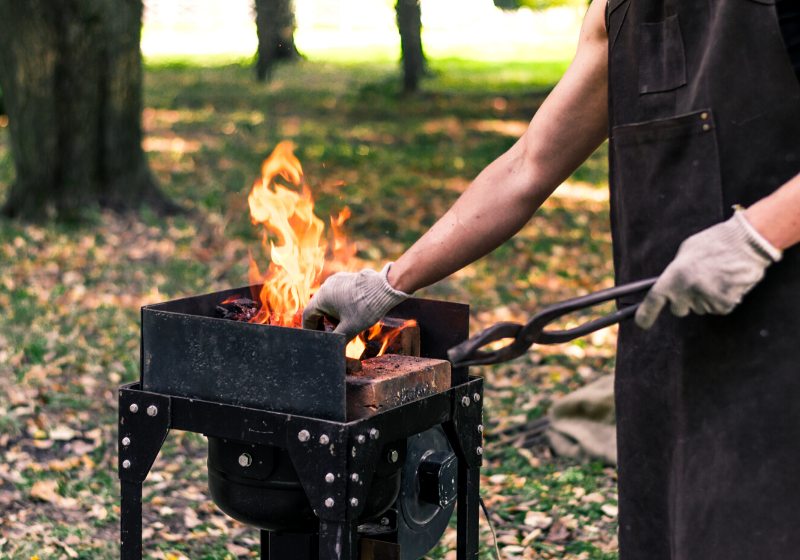
Meanwhile, you can create a simple blacksmithing forge at home. You can use an old grill or any solid platform where you can place a lump of burning coal.
Make sure to incorporate a blowing mechanism in your forge to make enough heat for forging steel.
Step 3: Putting the Wrench on the Hot Forge
After using the grinder on your knife, place the knife side of the wrench on the burning coals. Keep it there until it’s hot enough for the steel to be shaped.
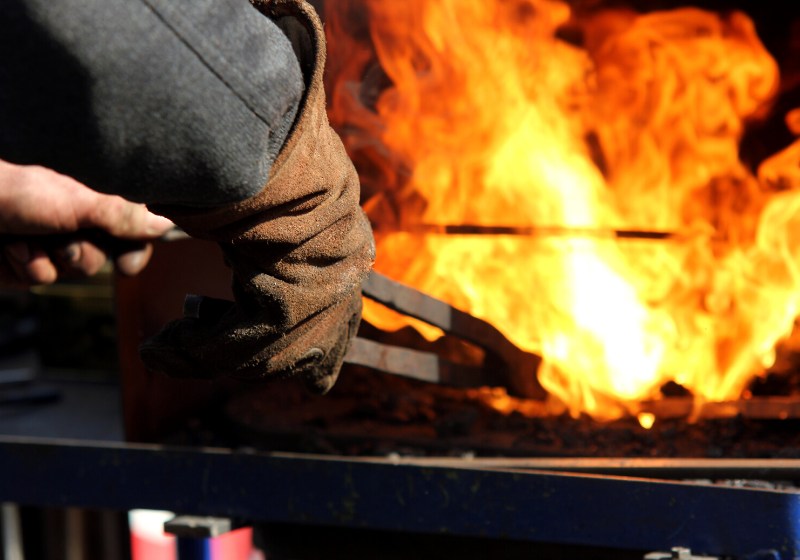
You should be able to determine when the steel reaches the forging temperature. At this point, the color of the steel should be red-hot, or yellow.
Step 4: Pounding the Steel
Once the steel gets really hot, place it on an anvil or any metal surface hard enough for support. Now, you can manipulate the steel.
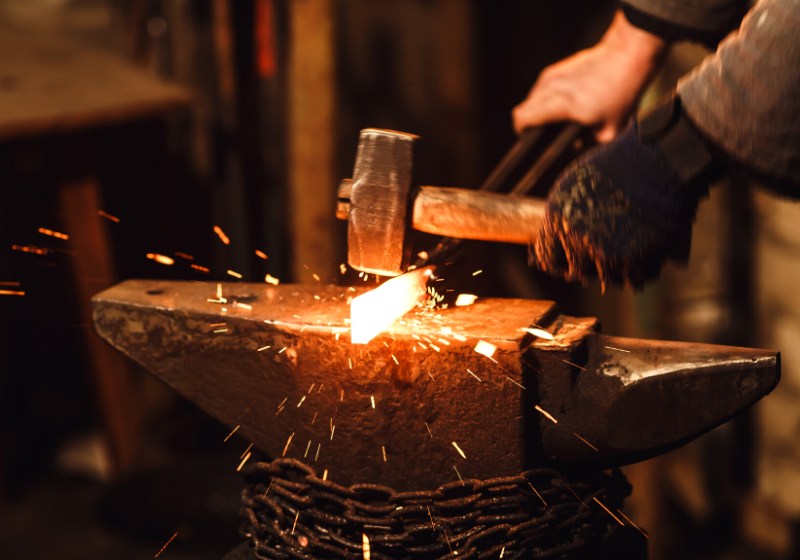
Pound it with a hammer until you get the desired shape of the blade. The metal may move in strange ways when hit by a hammer. Take this as a test of your blacksmithing skills.
RELATED: How to Make a Survival Knife
Step 5: Making the Blade
You can start making the blade as soon as you have achieved the form you want for your knife. A belt grinder or belt sander for metal is perfect for the job since it helps refine the blade.
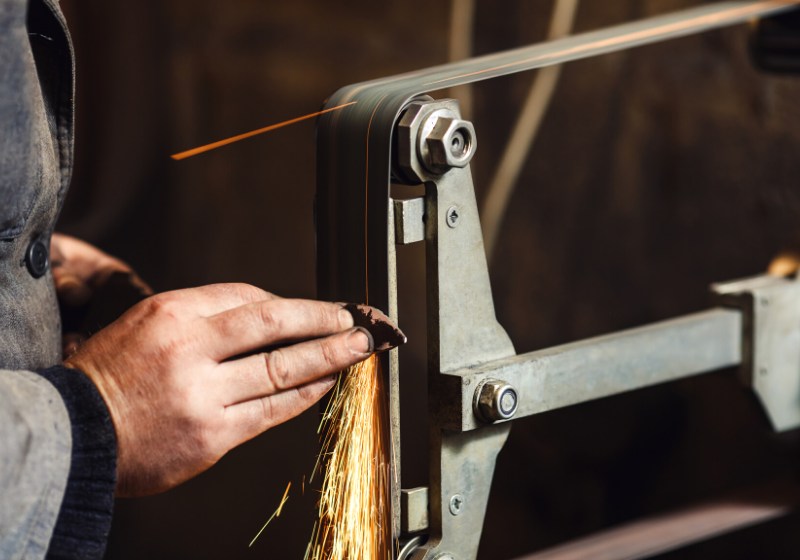
The belt grinder also gives the blades an even, smooth stainless appearance.
Step 6: Heat Treating the Steel

After you’ve worked on the blade’s sharp edge, put it back on the hot forge. Wait for the color of the blade to turn into a glowing red. Remove the blade from the forge then douse it in engine oil to conclude the process.
Finally, try not to apply pressure on the blade and allow it to cool for an hour.
Step 7: Sharpening the Blade
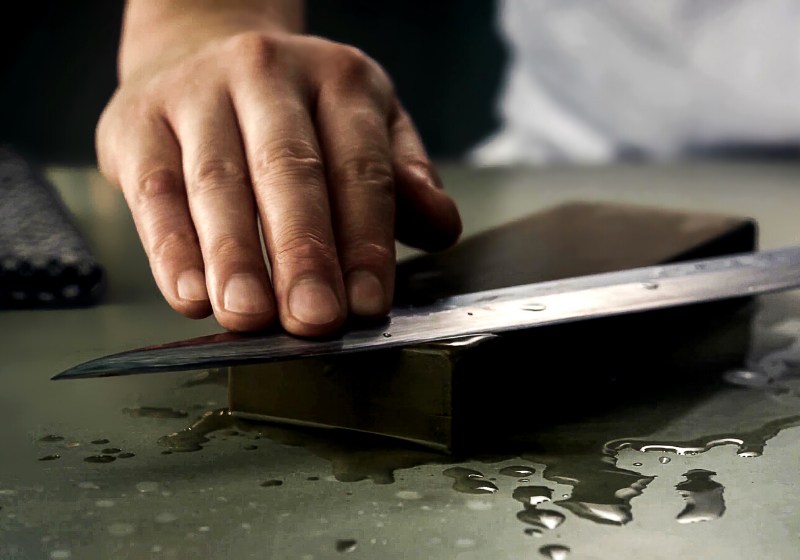
Once your blade has cooled down, give it a nice edge. So, keep your knife sharp by making sure you have a good knife sharpening tool.
Step 8: Appreciating Your Work
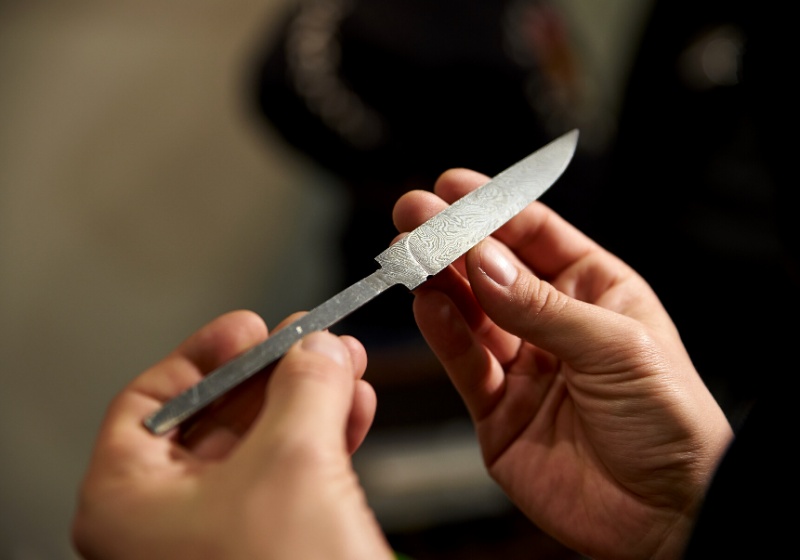
Last but not the least, appreciate your work! Only a few people make custom knives and can call themselves knife makers today. Soon, you can try making pocket knives, hunting knives, and other blades to test your skills.
Watch this video by Trollskyy on how to make a knife from an old wrench:
Knifemaking is a really great first blacksmithing project. We’re lucky to have modern tools at our disposal to simplify the work. Forging steel and blades must have been really difficult centuries ago.
Lucky for us, we have all the tools and means needed to transform any old wrench into a knife. Take advantage of this opportunity and continue improving your knifemaking and blacksmithing skills!
Have you ever turned an old wrench into a blade before? Tell us in the comments section below!
Up Next:
- 5 Tricks For Better Knife Sharpening
- Making The Cut: How To Make An Improvised Wire Saw From Scraps
- How To Tie A Square Knot | Step-By-Step Instructions
Calling all preppers, craftsmen, bushmasters, outdoorsmen and all-around skilled people, Survival Life needs YOU! Click here if you want to write for us.
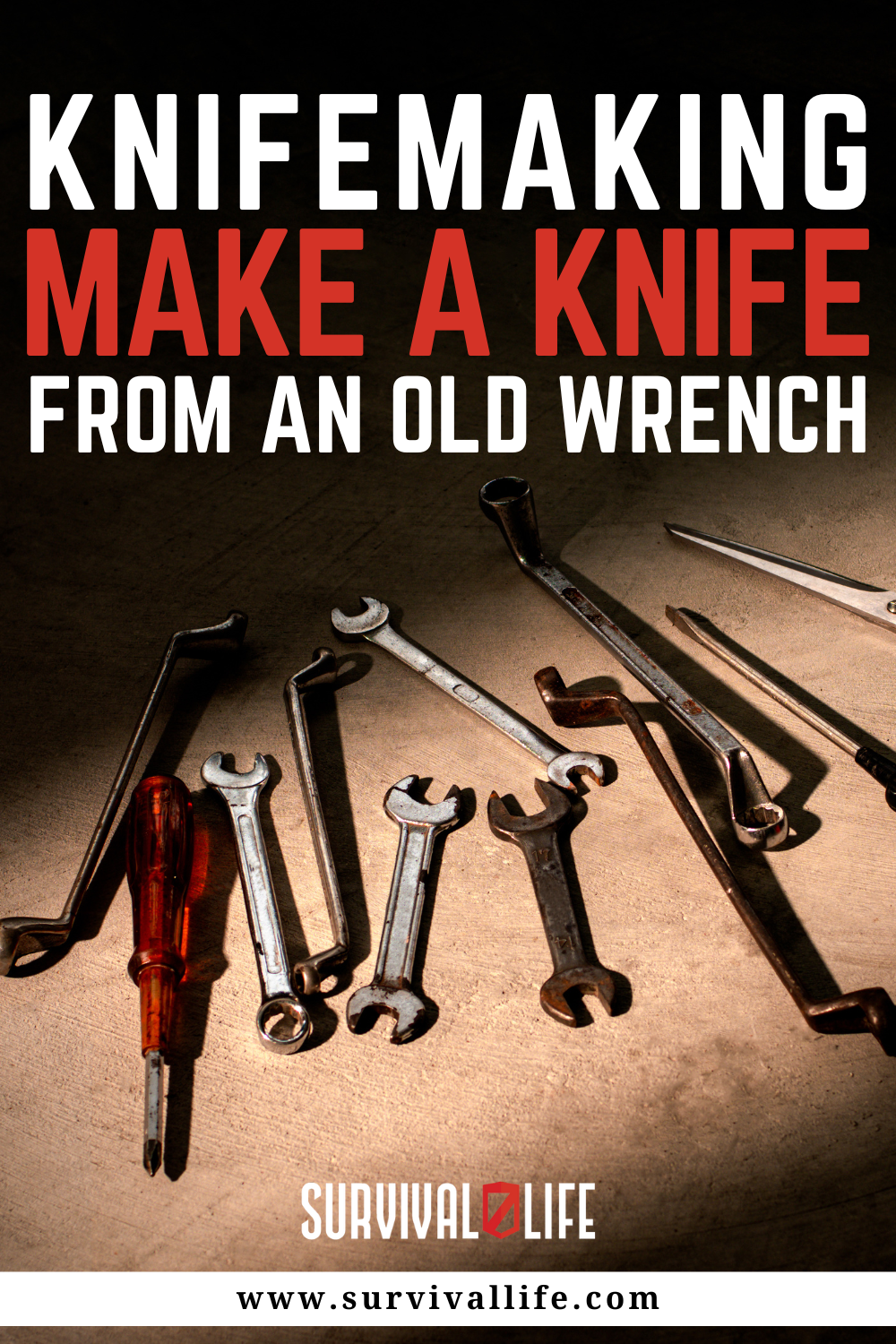
Don’t forget to stay connected with us on Facebook, Twitter, Pinterest, and Instagram!
Editor’s Note: This article was originally published in January 2019, and has been updated for quality and relevancy.
-

 Do It Yourself7 months ago
Do It Yourself7 months agoParacord Projects | 36 Cool Paracord Ideas For Your Paracord Survival Projects
-

 Do It Yourself9 months ago
Do It Yourself9 months agoHow To Make Paracord Survival Bracelets | DIY Survival Prepping
-

 Do It Yourself9 months ago
Do It Yourself9 months ago21 Home Remedies For Toothache Pain Relief
-

 Do It Yourself10 months ago
Do It Yourself10 months agoSurvival DIY: How To Melt Aluminum Cans For Casting
-

 Exports8 months ago
Exports8 months agoAre Switchblades Legal? Knife Laws By State


Pingback: 19 Old-School Survival Skills Youll Wish To Learn Before SHTF – For Survivalists & Preppers
Pingback: 19 "Old World" Primitive Survival Skills You'll WISH You Knew Before TSHTF
Pingback: Learning Knife Throwing | Survival Life
Ibcamn
April 10, 2017 at 11:28 AM
kool,…i really like that one,ive seen a few others,but they all looked like crap,not like this at all..
Pingback: Suspension Training System | Building Your Own In The Field
Pingback: DIY Suspension Training System: How To Stay Fit In The Field - The Right News Network
Keith Omaits
July 22, 2017 at 3:13 PM
If this is supposed to show us how to make a knife when the shtf, shouldn’t we be shown how to do this without electricity? I mean if we had all these new electric tools to make the knife, are we really in a shtf scenario? Show us how to do it without the tools found at hardware stores and that don’t require electricity…FYI
Anonymous
December 9, 2017 at 5:37 PM
It’s about making a knife today not Yester Century
Anonymous
December 26, 2017 at 9:16 PM
Actually it’s a poor instructional on making a knife with modern tools. The most important part of making a knife is metal selection and heat treatment. There is no telling what the wrench is made from, heating to red is vague, and motor oil is a poor quench fluid. There is no mention of tempering either.
Anonymous
April 3, 2018 at 12:23 AM
this is a real good basic video on forging. any steel can be forged. even stainless. and if you know anything about forging, you harden in oil and case harden in water. oil tempers the steel all the way thru and water only tempers the surface of the steel making it brittle.
Zach Barber
August 19, 2018 at 1:41 AM
Well the fella took his time and shared what he knew wrong or right I haven’t seen any of you that have responded devote the time to properly school someone in how to make a knife out of an old wrench. And most likely never will or you wouldn’t be trolling the how to section trying to learn how to make a wrench knife and then critiquing the instructions this man took the time to leave here for others to find. There are a million and that is literally a conservative number of ways for a person to make a knife out of a wrench. Or wrenches because even in sets most forged, drop forged and any tool steel starting with a letter of the alphabet and followed by a number, or spring steels or any of the billions of unique alloys you might run across using wrenches or “Tools” in general these days everyone is an expert and will have a load of info they will force feed you while you are actually trying to educate yourself or help others. I blame Television, parents, And well the last person that didn’t call them on the crap spewing from their mouths and help them and everyone else learn and get a little closer to getting it right. If you know the steel type then there are things that we know for a fact work for any condition or use that steel may be put to. The forge welding techniques temps and characteristics in any environment are readily available and if you have a half million in tools and equipment and extremely good and consistent material this information will do what it was meant to and make the steel perfect for every application. My knife making is generally out of a “Familar” steel or family of steels that are in the junk yard or broken tool and auto and railroad carbon and spring steels as well as some mystery stainless and old rusty horseshoes and rasps and files. I have even forge welded steel wool and bbs with stainless and high carbon wheel bearings . I have learned what reacts to heat and different annealing and quenching processes for the application I am creating the tool or blade for. Some things I will normalize and reharden in steps that I have learned work for me and my blades. Some I will never even quench only air cool because of the internal structure of the particular alloy after it has either reached non magnetic or forging temps which in the past looked beautiful on the outside but didn’t even resemble a metal on the inside lots of mistake sharing and admiring I didn’t know everything or most of the time anything is how the issues our ancestors and those before us and still with us are and will always be solved. I hope everyone enjoys what they do and never feels like someone else is less than themselves in the area of knowledge experience or anything else in life . Don’t be a wuss but be kind, share freely what you know without any desire to insult them or exhaust yourself and when someone else shares be silent and listen. And for gods sake ask questions like a person who want to learn not judge
Mansa Dumbre
February 25, 2019 at 1:30 PM
I made mine by cutting (using an acetylene torch) the shape (5 inch Bowie) I wanted (including the tang) from an old Chevrolet leaf spring. Then used hand filing to refine the shape and form the blade cutting edge. Drilled holes for the handle and splurged on some brass rivets and a brass guard. Hand filed the brass guard to fit the tang. Epoxied it in and then cut 2 pieces of well aged small-leaved (Dominican) mahogany for the scales. Rivetted them into place and then did a serve and tuck using #21 polished nylon cord. Then did 2 dip and dry steps on the handle using marine spar varnish. Finally, hand ground and honed the the blade. Not the prettiest knife around but very easy to use and plenty sharp for anything you want to cut. If you live near a saw mill, old used rotary buzz saws are about as good as the leaf spring steel for your home made knife. Did the whole thing as a project with one of my grandsons.
Anonymous
August 1, 2019 at 12:50 AM
Great information. Thanks!
Dave Eugen
April 11, 2018 at 8:25 PM
Amazing tips. I will try it out soon.
Pingback: hallway cleaners staverton
Pingback: Knifemaking: Make A Knife From An Old Wrench | Life Off The Grid
Pingback: Knifemaking: Make A Knife From An Old Wrench
Pingback: Primitive Survival Skills You’ll WISH You Knew Before SHTF | Survival Life
Pingback: 19 “Old World” Primitive Survival Skills You’ll WISH You Knew Before SHTF – Ultimate Survival Alerts
Pingback: How To Sharpen A Knife At Camp [Video] | Survival Life
Pingback: How To Sharpen A Knife At Camp [Video] | Primitive technology
Pingback: How To Sharpen A Knife At Camp [Video] – Ultimate Survival Alerts
Pingback: How To Sharpen A Knife At Camp [Video] - Survival Patch
Fred L Brown
July 21, 2019 at 7:32 PM
Many thanks to Zach and Mansa for techniques to forge and/or cut blades. I know a guy who forges his blades from a blend of mild steel, high carbon and stainless. First he hammers the steel into strips, then layers the strips and hammer folds the strips several times (sometimes dozens of folds) until the finished forging looks right to him. ( It’s fascinating to watch the flowing heat patterns in the metal in the dark!)
Pingback: Knifemaking: Make A Knife From An Old Wrench – Sprent Brass
Pingback: Best Auto Knife | Top 7 Automatic Knives on Amazon 2022 | Movie Signature
Pingback: how to make a knife out of a skill saw blade - Saw Tool
Pingback: Knifemaking: Make A Knife From An Old Wrench – brandname
Pingback: Knifemaking: Make A Knife From An Old Wrench – Caliberhub
Pingback: Knifemaking: Make A Knife From An Old Wrench | brandname
Pingback: 11 Powerful Homemade Hunting Weapons | Tactical Kart
Pingback: Make A Knife From An Old Wrench – BestSurvivalSkills.com
Pingback: HFT Survival Knife Review | Survival Life | Spent Brass
Pingback: The HFT Survival Knife Assessment – outdoorequipmentguide.com
Pingback: The HFT Survival Knife Review | Free Patriot Gear
Pingback: The HFT Survival Knife Review - Survival Shot
Pingback: The HFT Survival Knife Review – SurvivalCove.com
Pingback: The HFT Survival Knife Review - Les Recettes Savoureuses
Pingback: 11 Powerful Homemade Hunting Weapons | Survival Bazaar
Pingback: Make A Knife From An Old Wrench - Survival Shot
Pingback: 11 Powerful Homemade Hunting Weapons | Premium Tactical Gear
Pingback: Make A Knife From An Old Wrench – SurvivalCove.com